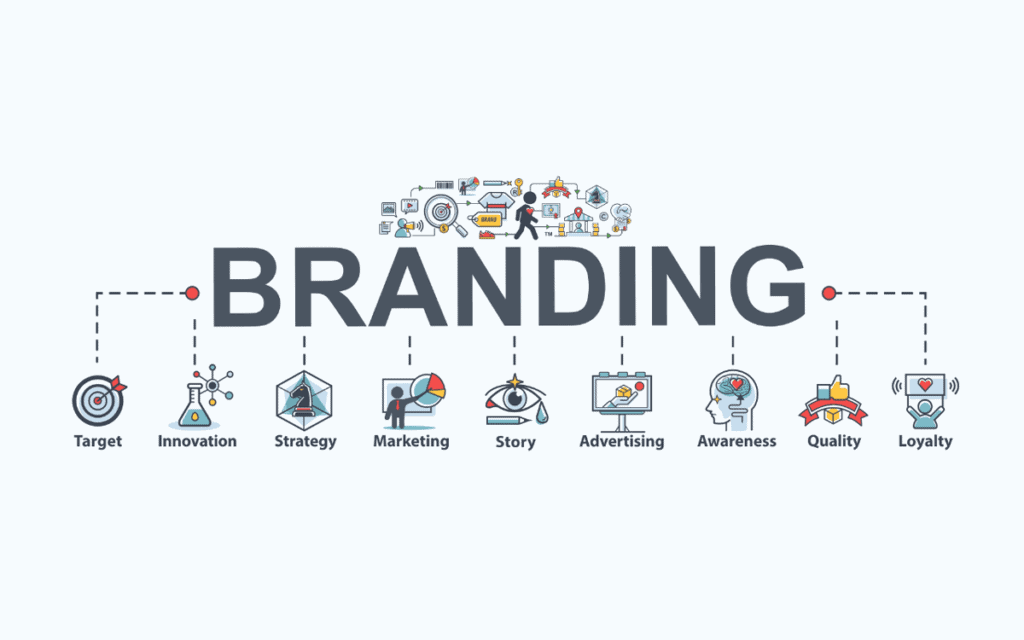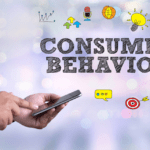
Introduction:
In this article, you will see what is brand, branding, its importance, and effective branding methods to increase the brand value which will attract more customers and also improve your business.
What is Brand?
- Brand is Emotion
- Brand is Perception
- Brand makes your product unique
- Brand creates a specific feeling in the mind of your customers
What is Branding?
Branding is the process of creating a strong, positive perception of a company, its products, or services in the customer’s mind by combining such elements as logo, design, mission statement, and also a consistent theme throughout all marketing communications
Why is Branding important?
- Branding forms perceptions
- Branding influences decisions
- Branding increases customer retention
- Lastly Strong brands have strong market share
What makes up a brand?
- History
- Competency
- Mission
- Market orientation (Needs of the customer)
- Scale (Size of a company, national/global)
- Organization
- Reputation (Current reputation of the company)
- Stability (Financial performance, Goal)
What is a Brand system?
- A customer’s culture affects how they experience your brand
- Every touch point contributes to the brand.
- Physical – Tangible items
- Mental – What customer experiences
- Social-cultural – Things that affect customer perception, trends, attitude
Effective Branding Methods:

1) Brand Research:
Create a brand strategy
Branding strategy
- Defines the brand
- Guides the application of the brand
- Strategy begins with the definition of the brand
Ask the below questions to get the answer of your Brand.
- What do you want the brand to be?
- What do you want the customer perception to be?
- How will your brand match the consumer perception?
- What will attract customers to your brand?
- What will detract customers from your brand?
- What trends will impact the industry?
- How will you measure growth?
Forms of reference:
- Purchases are made based on perceived benefits.
- Perception comes from a frame of reference
- Determine your products frame of reference to define the competition
Conduct an internal brand audit:
- Touch points
- Telephone
- Internal communication
- Signage
- Packaging
- Social media
- Reviews
2) Brand Development:
Brand positioning:
- To get attention/attraction
- For example) Eco-friendly, corporate responsibility
- Brands don’t have to resonate with everyone just their primary audience
- Positioning helps customers believe products claims
Define a unique selling proposition:
- Focus on customers who fit your brand.
- For example) Convenience, innovation
Make your brand unique
- Successful brands are an experience.
- Successful brands focus on details
- Successful brands set themselves apart
- Successful brands demonstrate a difference (Unique selling point)
- Who are you targeting?
- What are the benefits of your products?
- What makes your product unique? – Invest time to narrow
Create a vision statement:
- What is the vision of your brand?
- What are the core values?
Brand Personality:
- Establish a personality for your brand
- Develop core values
Types of personality:
- Sincerity
- Excitement For example) Trendy
- Competence For example) Smart, hardworking
- Distinction For example) Glamour
- Ruggedness For example) Touch, active, long-lasting
3) Brand Experience:
Evaluate brand visuals:
- Brand visuals affect perception
- Perception affects brand identity
- Brand identity stimulates purchase decisions -Where will your brands be seen:
- Your brand needs to stand out (Visually)
- Expose & remove to see feedback
- Ask for ratings from customers
Evaluate the brand language:
- Establish brand voice early
- 1st Page brand story
- Use voice to express the essence of your brand
- Create a consistent voice
- Voice differentiates your brand
- A familiar voice disarms the customer
Storytelling:
- Create a story of the brand
- Brand story embodies the brand personality
- Stories are about people.
Branding through storytelling:
Stories are engaging
- Stories are emotional
- Stories are images
- Stories are clear
- Stories are as long as they need be
Select brand colour:
- Colour makes your brand relatable
- Brain process colour next to the shape
- Chose colors that embody your brand
4) Brand Touch points:
- The Influence of touch points
- Touch point influences the consumer
Stages:
- Pre purchase – Identification of needs & wants
- Purchase – Evaluate & Comparison
- Post purchase – Retention, Service, Warranty, etc
Touch points:
- Brand created, intrinsic, customer initiated.
- Created touch point: Ads, promotions, social media, words of mouth, displays
Naturally occurring touch points:
- Customer service
- Reinforcing messages
- Easy purchase
- Communication with staff
Exploring the customer journey:
Steps involved:
- Messaging should be consistent across all touch points
- Messaging should resonate with the customer for whom it was intended (Understandable)
- Focus on the details
- Impress your customer
5) Brand Management:
Internal brand culture
- A brand is an emotional relationship.
- Employees are key to a good customer experience
- Employees need a reason believe
- Employees want to grow in their careers
- Employees want to be proud of what they do
- Every employee reflects your brand
- Educate employee to become brand champion
Brand responsibility:
Every company needs a brand leader – Recognize someone in organization, designate one person to make decisions regarding the brand
Brand culture:
Overcome damaging events:
- Because of some mistake
- Plan for worst case scenarios
- Discover where you are most vulnerable
- For example) Delivery time, production mistake/defects
- Monitor your brand
- Brand is an asset – protect it
6) Brand Loyalty:
Net promoter score:
How likely is it that you would recommend this brand to a friend or colleague?
Draw a Scale showing readings 1 to 10 with three markings: Less Likely – Neutral – Extreme Likely
- Promoter: 9 to 10 – Brand advocate
- Passive: 7 to 8 – Neutral about your brand
- Detractor: 0-6 – Actively dissatisfied with your brand
Brand promoters:
- Promoters are big fan of your brand
- Want to share
- Want to be a go to resource
- Want to be seen as a brand expert
- Use your brand as a reason to connect with others
- Share your content because it supports their interest
Brand detractors:
Detractors drive people away from your brand.
- Had a bad experience
- React on opinion
- Are motivated by emotion
- Limited influence
- Understand detractors
- Search in social media
7) Brand Validation:
What is brand equity?
- It is the value of brand in the marketplace
- Higher equity brand has high value, Customer recognition
- Establish your brand and then build awareness
How to measure brand equity?
- Brand asset measurement (BAV)
- Using brand asset validator – Differentiation, Relevance, Esteem, Knowledge
- By survey or customer interviews
- Differentiation: How often do customer encounters & recognize your brand?
- Relevance – Will consumers purchase your products”
- Esteem – What is your brand known for?
- Knowledge – What do customer knows about your brand?

Conclusion:
Thus, by following the above effective branding methods we can increase the brand value and improve the business.
LIKE WHAT YOU’RE READING?
CHECK OUT SOME OF OUR OTHER GREAT CONTENT HERE:
- MARKETING MANAGER ROLES AND RESPONSIBILITIES
- DEFINITION FOR ETHICS IN BUSINESS
- DEFINITION OF MARKETING MANAGEMENT
- ROLE OF BLOGS IN MARKETING
- MEANING OF MARKETING SEGMENTATION
- UNDERSTANDING DIGITAL MARKETING
- WHAT IS AFFILIATE MARKETING? (HOW TO GET STARTED)
- PERFORMANCE MARKETING – A BEGINNER’S GUIDE
- IMPACT OF MARKETING ON SOCIETY
- UNDERSTANDING CONSUMER BEHAVIOR
- HOW TO INCREASE SALES?
- HOW AI IS USED IN DIGITAL MARKETING?
- 5 BEST SOCIAL MEDIA PLATFORMS FOR BUSINESS IN 2022
- WHAT IS THE DEFINITION OF ECOMMERCE




17 Comments